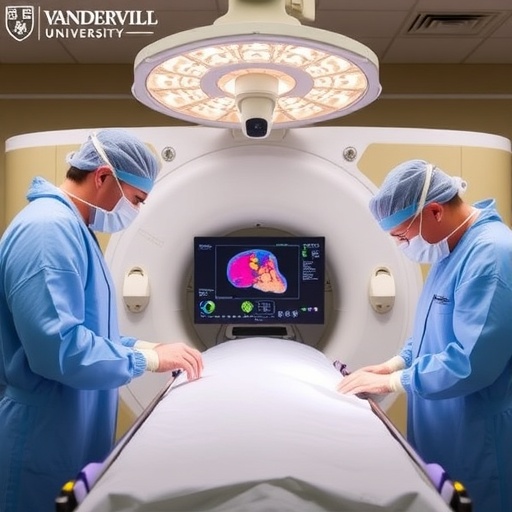In a groundbreaking study conducted by researchers at the University of Helsinki in collaboration with the Folkhälsan Research Center, new insights into the mechanisms driving genetic mutations in dogs have been uncovered. By analyzing 390 parent-offspring trios—where the complete genomes of both parents and their puppy offspring were sequenced—scientists have illuminated the origins and consequences of spontaneous gene mutations that occur in the earliest developmental stages. These so-called de novo mutations, which arise either in the sperm or ovum or immediately after fertilization, are critical not only for evolutionary processes but also for understanding hereditary diseases across canine breeds.
Employing extended family pedigrees from one of the most comprehensive biobanks coupled with high-resolution DNA sequencing technology, the team elucidated where precisely these mutations appear within the canine genome. Their findings reveal significant differences in mutation patterns between dogs and humans, shedding light on the genomic architecture underlying breed diversity and health. Notably, the study highlights how such mutations accumulate differently depending on parental age, breed size, and sex-specific contributions, offering invaluable information for future breeding programs aimed at reducing genetic disorders.
One of the cornerstone revelations of this investigation is the direct correlation between parental age—especially the father’s—and the frequency of newly arising mutations in puppies. On average, only several dozen novel mutations are observed per generation, a number surprisingly consistent across a wide array of dog breeds despite intense selective breeding efforts. Older sires contribute disproportionately more mutations than previously documented in human genetic studies, suggesting a unique mutation dynamic in canines. Meanwhile, maternal age exerts a milder, yet still noticeable influence, indicating sex-specific mechanisms governing genetic stability during gametogenesis.
Further genetic analysis revealed breed-specific trends regarding mutation accumulation early in life. Larger dog breeds tend to amass more de novo mutations during early development, while smaller breeds exhibit a steeper increase in mutation count as parental age advances. Despite these variations, the total mutation load per generation remains remarkably uniform across breeds, an intriguing finding that hints at evolutionary constraints modulating mutation rates. These data not only provide a framework for understanding breed-specific genetic vulnerabilities but also pose important questions about lifespan and disease susceptibility linked to molecular aging.
The spatial distribution of mutations within the canine genome showed a pronounced bias toward gene regulatory elements known as CpG islands. These regions, which function as genomic “switches” controlling gene expression, are hotspots for new mutations in dogs, a pattern contrasting sharply with that found in human DNA. This distinctive mutation localization is linked to the absence of a regulatory protein called PRDM9 in dogs—a protein that in other mammals orchestrates genetic recombination during meiosis and shapes mutation landscapes. The lack of PRDM9 in canines possibly redirects mutational processes, altering genome evolution and diversity in ways previously unappreciated.
An extraordinary case emerged within the dataset: a single puppy manifested an abnormally high number of mutations, predominantly maternal in origin. This anomaly suggests a transient failure in DNA repair mechanisms during ovum maturation, a phenomenon seldom observed but known to occur in humans. Such insights deepen our understanding of the stochastic nature of mutational events and the interplay between intrinsic cellular quality control and genetic inheritance. Highlighting this rare yet impactful occurrence underscores the importance of monitoring mutation rates for canine health and breeding strategies.
Moreover, leveraging the mutation data, the research team refined estimates for the evolutionary divergence between domestic dogs and their closest wild relatives, wolves. The analysis situates this divergence event approximately 23,000 to 30,000 years ago, a timeline that recalibrates previous models and informs theories about domestication and canine ancestry. These temporal refinements contribute to broader discussions on mammalian evolution and the genomic factors facilitating species adaptation to human environments.
The implications of these findings extend beyond canines, offering a comparative framework that enhances human genomic research. By paralleling mutational phenomena across species, scientists gain a richer contextual understanding of genetic disease mechanisms and evolutionary biology. The study’s methodology—utilizing multigenerational family trios and high-throughput sequencing—demonstrates a powerful approach applicable to diverse organisms, enabling precise dissection of de novo mutation origins and their phenotypic ramifications.
Professor Hannes Lohi, the lead investigator, emphasized the practical application of this knowledge, suggesting that breeders consider parental age when planning matings to minimize genetic risks. Such strategies could mitigate the incidence of hereditary disorders linked to spontaneous mutations, propelling the field toward more informed and ethical breeding practices. This research thus bridges the gap between theoretical genomics and tangible veterinary and conservation outcomes, reinforcing the value of integrative genetic studies.
In essence, this comprehensive analysis of de novo mutations in a broad spectrum of dog breeds establishes a new paradigm for understanding genetic variation and inheritance. By integrating pedigree information, mutation localization, and evolutionary timelines, the study offers a multifaceted picture of canine genome dynamics. These discoveries promise to shape future research on mutation biology, evolution, and the genetic basis of health and disease across species, heralding a new era in genomics-informed breeding and medicine.
As sequencing technologies continue to advance, enabling even finer resolution of genetic data, the frameworks established here will serve as foundational references. Future studies may delve deeper into environmental and epigenetic factors influencing mutation rates and their phenotypic consequences. The knowledge gleaned from canine genetics not only enriches veterinary science but also provides a valuable mirror for human genomic research, underscoring the universality and complexity of life’s genetic blueprint.
With the mounting evidence from this study, the role of parental age, mutational mechanisms, and evolutionary biology becomes clearer, offering pathways toward improved animal welfare and genetic health. The intersections of genomics, breeding, and evolutionary theory illuminated by this work underscore the urgent need for continued interdisciplinary research in understanding the origins and impacts of de novo mutations.
Subject of Research: Animals
Article Title: Determinants of de novo mutations in extended pedigrees of 43 dog breeds
News Publication Date: 25-Sep-2025
Web References:
http://dx.doi.org/10.1186/s13059-025-03804-2
Image Credits: Hannes Lohi
Keywords: de novo mutations, canine genomics, parental age effect, CpG islands, PRDM9 absence, hereditary diseases, dog-wolf divergence, genome sequencing, mutation rate, DNA repair, evolutionary biology
Tags: breeding programs for genetic healthcanine genome sequencing studyde novo mutations in caninesevolutionary processes in dogsgene mutations in puppiesgenetic diversity in canine breedsgenetic mutations in dogshereditary diseases in dog breedshigh-resolution DNA analysis in geneticsimpact of paternal age on offspringparental age and puppy healthUniversity of Helsinki canine research






